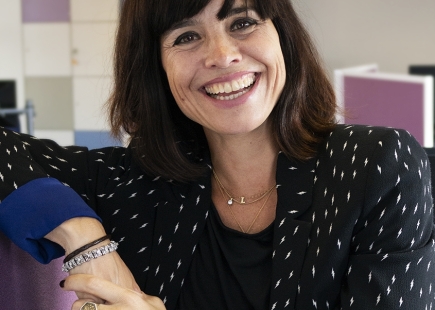Nostalgia Part Three: The science behind nostalgia, how brands can use it and why it works

In the third and final part of this series (Part One and Part Two here), Fever PR’s Will Holloway talks to consumer neuroscientist, Dr Cristina de Balanzo about the science behind nostalgia - specifically how it actually works and how creatives can use this knowledge to better connect with their audiences.
Dr Cristina de Balanzo is a board director at Walnut Unlimited, the human understanding agency within the Unlimited Group.
The conversation explores the effect that nostalgia has on the brain, its power compared to other primal emotions, the best ways to trigger the feeling, whether nostalgia actually makes us happy, and finally, how creatives can use this to create more impactful campaigns.


Will Holloway: Can you explain the impact that nostalgia has on the brain from a neurological perspective?
Dr Cristina de Balanzo: Nostalgia is a complex emotion that involves past-oriented cognition and a mixed affective signature. The emotion is often triggered by encountering a familiar smell, sound, or by engaging in conversations with people or a situation that feels familiar.
It has been reported that nostalgic experiences activate several regions of the brain, particularly the prefrontal cortex, limbic, paralimbic, and midbrain areas. People who listen to music that evokes nostalgia experience greater activity in specific areas of the brain than they do when listening to music that does not induce nostalgia. Hence there are many parts of the brain (more rational, emotional, and reptilian structures) that processes nostalgia in relation to specific content.
WH: How does the strength of nostalgizing (i.e. thinking nostalgic thoughts) compare to more primal emotions like fear, love, anger? Can it ever be as powerful as those emotions?
CB: Fear, happiness, and anger as you said, are primary emotions that are almost automatic in terms of reaction and do not require our higher cognitive functions to act on. Nostalgia is a more complex emotion that requires an appraisal involving more conscious memory retrieval and rewards systems when integrated with sensory information.
I think the power of nostalgia lies in its capacity to improve our mood, increase social connectedness, enhance positive self-regard, and provide existential meaning.
It can act as a glue that can bring things and individuals together. It also has a social component of recognising something that was part of our past and celebrating it as well as ascribing value to it.
In a time when most marketing has tended to focus on the future, nostalgia transports us back to a simpler place where our current challenges do not matter.
Our memories serve as a comfort blanket and reminder of better times.
The outbreak of Covid-19 has turned the world upside down and left us with a massive need for connectedness and togetherness, so I think nostalgia if it is well played, can be an effective tool to bring the world together.
WH: How can brands effectively use nostalgia in their campaigns?
CB: We will always say that it is effective if your brand can really own it and your brand has an instrumental role to play. So, if your brand is able to be part of this past and use it to create a nice memory to the present, then it should work as effectively as both positive past experiences or autobiographical memories can to enhance a brand’s personal relevance.
Campaigns using nostalgia need to connect with audiences at emotional level, be relevant with a brand’s tone of voice and to have a clear purpose i.e. not just using nostalgia for the sake of it.
Nostalgia brings a sense of familiarity which is always a nice way to connect with your audience as it acts as a social glue.
WH: We’ve talked about the upsides of nostalgia but let’s talk about the other side – can nostalgia make us feel sad?
CB: Indeed, nostalgia has a mix of affective signatures. So far, we have been talking about the positive side of nostalgia, but as almost anything else, it has the other side of the coin.
It is a human truth that we all feel nostalgic sometimes, we might want to go back to a certain time or situation in our lives, something that’s already happened but the reality is that we can’t. It just lives in your memories and this brings with it a sense of suffering – a wistfulness over something that is gone now, something we had and then lost.
So we can say that there are two different kinds of nostalgia, one is a positive feeling, one that you can recreate and makes you feel better for what it was, a nice memory overall or it can also be a pain felt about something that cannot come back again and will never be even if you wish hard for it.
Which external stimuli (sight, sound, smell etc.) are proven to be the most effective way to trigger nostalgic feelings and thoughts?
Our brains work always crossmodally, which means that they integrate more than one piece of
sensory information at the same time, so it’s better to try to combine them.
We don’t just experience food through taste, but with sight, sound, memories, and indeed smell. So, we would always encourage creatives to create work that targets more than one sense to enhance any experience or communication as you will then have more chances to be effective and influence behaviour.
So if you want to leverage and trigger nostalgia, the most effective way would be through a
combination of senses but providing a special focus on smell because of its inner relationship with emotion.
WH: Can challenger brands use nostalgia effectively or does it work better for heritage/more established brands?
CB: I think any brand can honour creativity using nostalgia and spin it positively to bring more joy to the present and still be relevant to their brand values and meaning.
At the end of the day, as with any creative territory, it’s all about how you use it, both in execution and strategy, and translate it into your brand world to make sure that the brand has still its own tone of voice and values being portrayed.
We are seeing a few creative executions from brands that focus on nostalgia in an attempt to build a stronger sense of emotional engagement. The first example that came to my mind is Hovis’ ‘Boy On The Bike’ ad and more recently we have seen most of John Lewis’ Christmas ads and most of the grocery retailers using it in one way or another.
However, in other categories with no necessary heritage or long history, like Tourism Australia’s ‘Dundee’ campaign, we have seen how to use nostalgia effectively and even financial services like Halifax have been using Top Cat and The Flintstones.
In this last case, the key learning is to use it consistently throughout time, as then the world you develop with it becomes the way you are recognised and hence becomes your brand asset.
If you enjoyed this article, you can subscribe for free to our weekly email alert and receive a regular curation of the best creative campaigns by creatives themselves.
Published on:



